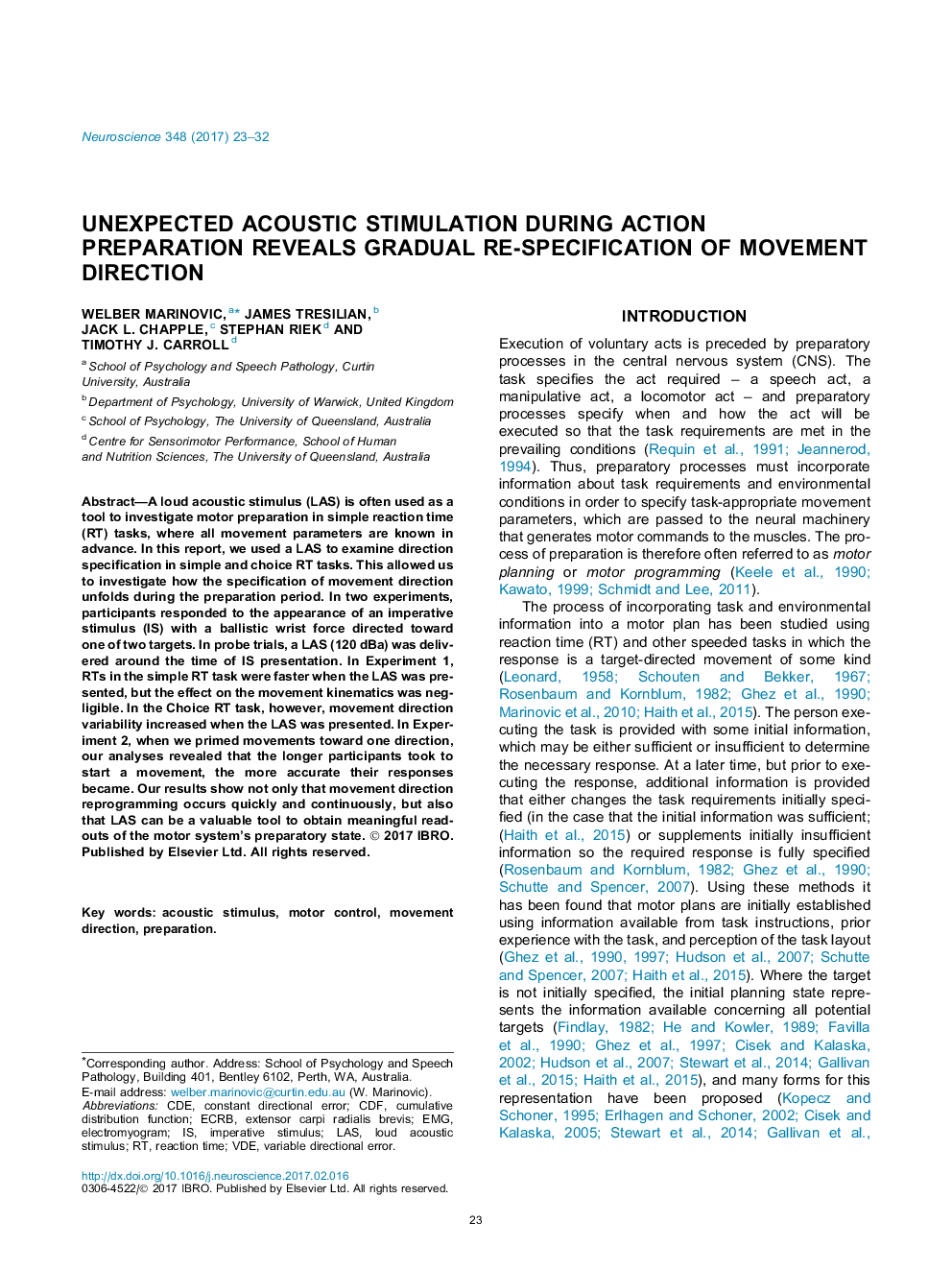| Article ID | Journal | Published Year | Pages | File Type |
|---|---|---|---|---|
| 5737777 | Neuroscience | 2017 | 10 Pages |
Abstract
A loud acoustic stimulus (LAS) is often used as a tool to investigate motor preparation in simple reaction time (RT) tasks, where all movement parameters are known in advance. In this report, we used a LAS to examine direction specification in simple and choice RT tasks. This allowed us to investigate how the specification of movement direction unfolds during the preparation period. In two experiments, participants responded to the appearance of an imperative stimulus (IS) with a ballistic wrist force directed toward one of two targets. In probe trials, a LAS (120Â dBa) was delivered around the time of IS presentation. In Experiment 1, RTs in the simple RT task were faster when the LAS was presented, but the effect on the movement kinematics was negligible. In the Choice RT task, however, movement direction variability increased when the LAS was presented. In Experiment 2, when we primed movements toward one direction, our analyses revealed that the longer participants took to start a movement, the more accurate their responses became. Our results show not only that movement direction reprogramming occurs quickly and continuously, but also that LAS can be a valuable tool to obtain meaningful readouts of the motor system's preparatory state.
Keywords
Related Topics
Life Sciences
Neuroscience
Neuroscience (General)
Authors
Welber Marinovic, James Tresilian, Jack L. Chapple, Stephan Riek, Timothy J. Carroll,
